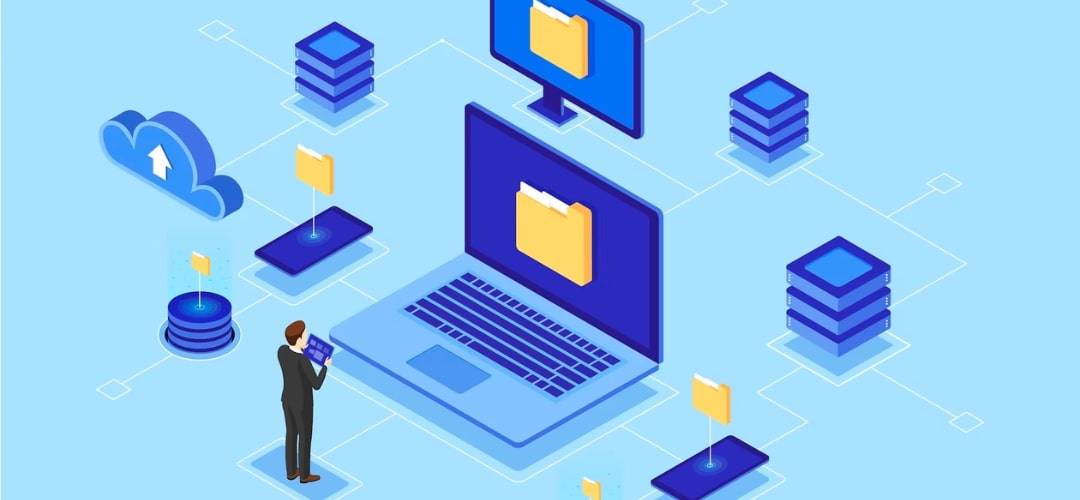IT Ops 4.0 is finally scaling up and becoming mainstream after a decade of discussions and pilots. Industry 4.0 converges information technology and operational technology to enable interconnectivity. Enabling technologies, such as AI-powered analytics and automated systems, offer huge productivity boosts. While Industry 4.0 disrupts individual systems, Ops 4.0 addresses the entire value chain. For instance, Industry 4.0 disrupts the manufacturing functions within a plant. IT Operations 4.0 disrupts procurement, product development, supply chain, back office support, field ops, and customer service.
Many enterprises underestimate the role of humans in the sustained success of IT Ops 4.0. Industry 4.0 and IT Ops 4.0 is tech-centric. But humans are an essential cog and play a critical role in the sustained success of these recent developments. Unless knowledge workers apply their conceptual understanding, deriving synergy from Integrated insights and interconnected improvements becomes a non-starter.
1. Breaking down functional silos
IT Ops 4.0 breaks down functional silos and integrates the end-to-end value chain. System interconnectedness unlocks gains not available through improvements at the functional level. For instance, productivity boost at a plant depends on the materials flow into the plant, which depends on the planning.
Breaking down silos and integrating the value chain requires human expertise. Sustainable improvements require in-depth knowledge of operations at the macro and micro-level.
Consider the case of a petrochemical company with low satisfaction among its B2B customers. The company set up a cross-functional team and equipped them with an agile studio. The team redesigned the ordering system from the customer’s point of view. Predictive algorithms optimised the production-planning and scheduling process. The result was a 24-point lift in key performance indicators and customer satisfaction, which improved margins by 2% to 3%.
2. Automating systems
Automation is the way forward for enterprises to survive an increasingly complex and hostile business environment. RPA, the incumbent automation technology of choice,
automates routine and repetitive tasks. IT Ops 4.0 creates autonomous tasks for complex processes powered by data..
Data analysts use data from various sources, to derive actionable information. Digital systems including IoT emit operational data. Machine-to-machine communication throws up rich real-time data useful for behavioural learning. Artificial Intelligence empowers business intelligence systems to act on insights.
State-of-the-art technology powers end-to-end automated data-based processes. The human element comes into play to:
- Code programs. Seamless automation requires programmers adept at delivering versatile programs.
- Train algorithms. Machine Learning AI works by itself. Human trainers train the algorithm by imputing data. The algorithm deciphers trends and patterns from the data to frame rules and make predictions. In rule-based AI, human programmers set the rules, and the algorithm works within a range. Either way, success depends on competent data scientists adopt in Big Data and the ability to identify the right data sets.
- Monitor the activities of autonomous systems and set course corrections.

3. Improved way of work
Cyber-physical systems enable decentralised decision-making, to speed up processes and make enterprises more resilient.
One of the top applications is in enabling remote work. IT Ops 4.0, with its integrated approach to enterprise systems, makes remote work seamless. Businesses can source talent from across the world for most tasks and get work done remotely. The critical infrastructure that enables such new way of work includes:
- Transparent processes that allow visualisation and deeper intelligence. Free information flow eliminates silos and improves collaboration. Enterprise success depends on converting such intelligence to support decisions and problem-solving.
- Integrated collaboration platforms structure communications, issue notifications and alerts and provide easily accessible logs.
- Robust APIs to link databases and ensure seamless data flow.
- Mobile apps to power enterprise systems, such as mobility for field service app
Success depends on a cultural shift supporting the transformation of people’s work. Without motivating and engaging the workforce to adapt to the new technologies, IT Ops 4.0 will remain a non-starter. Methods for the workforce to reinvent itself include:
- Communicating the benefits of change. The workforce needs straightforward answers on what is in it for them.
- Commitment from leadership, especially leading from the front and walking the talk. The top management also needs to articulate the willingness of the company to work differently than before and be steadfast in agile.
- Training and development. Skill upgrade has not matched technology advantages, making the talent crunch more acute today than at any other point in history. Enterprises who make proactive training interventions to up-skill their workforce reap competitive advantage.
4. Getting capability building right
Enterprises benefit from IT Ops 4.0 only when the new technology aligns with business outcomes. Such alignment offers businesses greater control and insights. Capability building is the key to attaining such ends.
At the macro level, jobs are a zero-sum game in IT Ops 4.0. For instance, in Indonesia, digital technologies will create more jobs than new technologies will displace in the coming decade. Likewise, digitization and automation in South Africa will result in a net gain of 1.2 million jobs by 2030. But enterprises face significant disruption as demands for skill shifts speed up. The gaps are especially rife in operations-intensive sectors.
Capability building embeds new capabilities or enables the enterprise to scale recent advances. Success depends on a practical approach that identifies the ground realities and does not disrupt the flow. For instance, a manufacturer who designs a Greenfield plant could opt for automated and end-to-end integration and have flexible organisational structure. But when upgrading a plant with 500 strong workforce, the approach to capability building will have to be different. The enterprise may have trained the workforce on legacy tools, and the more cost-effective approach would be to continue with the legacy tools and processes. In this case, the enterprises could add layers of sensors, data analytics, and other IT Ops 4.0 tools to the legacy layer. In the same way, they may upgrade the skills of the incumbent workforce.
Practical solutions to capability gaps include:
- Promoting a learning organisation. Add continued learning and re-learning, along with the time-honoured focus on continuous improvement. Large enterprises have a strong case for a new senior management role dedicated to reskilling the workforce.
- Providing the workforce with the tools and resources for skill development..
- Having structured performance appraisals to track the skill-sets and development of individual employees. Offer individually tailored learning interventions.
- Giving importance to experiences and apprenticeship over courses.
- Effective capability building involves many methods, such as self-service training, classroom learning, apprenticeship, and on-the-job support.
- Deploy systems to track skills within the enterprise. Provide individuals with incentives to invest time and energy in developing skills.
Capability building has to take place at the onset of a project. Excellent business cases or tech investments come to nought if the relevant capability is lacking.
Operational capabilities give enterprises strength in turbulent times. Technology shifts, environmental concerns, geopolitical tensions, and pandemic waves create significant uncertainties. Most businesses face pressure under these challenging times. Enterprises that achieve operational excellence and speed up productivity improvement thrive in difficult times. The key to such resilience is an IT Ops 4.0 ready workforce.
Here are five additional tips to transition from traditional ITOps to automated AIOps.











